Red Flag Expands Out Into The Pacific With An Eye On China
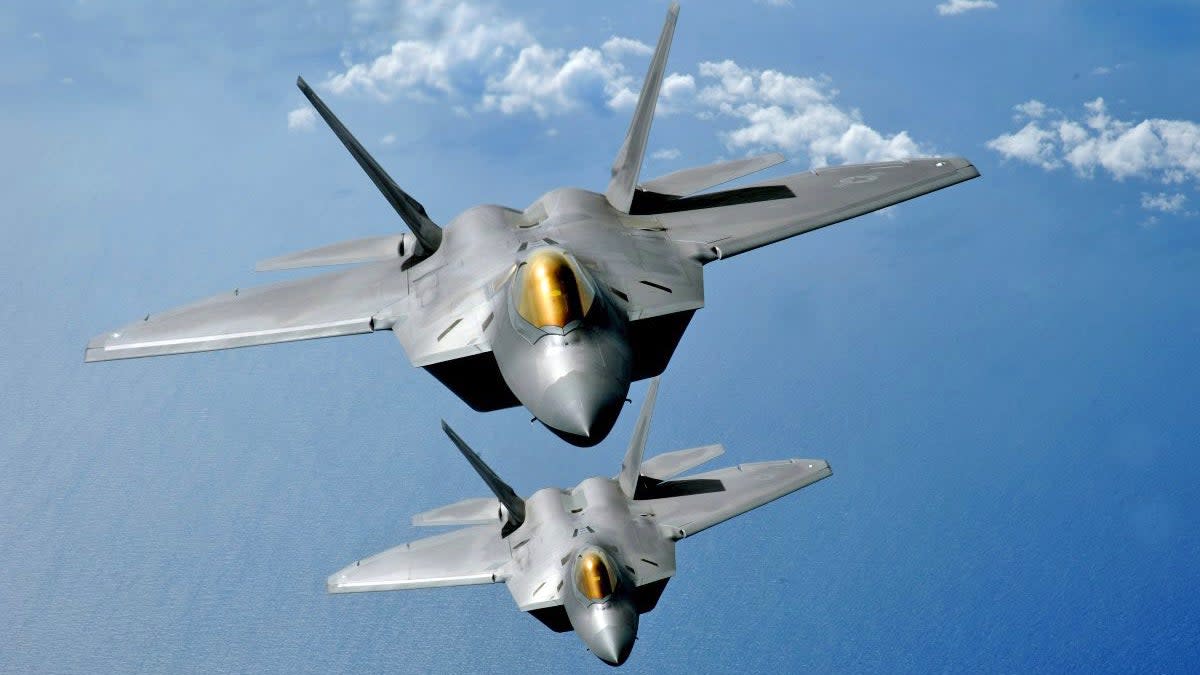
The U.S. Air Force's premier air combat exercise, Red Flag, has been blended together with a U.S. Navy aircraft carrier's capstone Composite Training Unit Exercise, or COMPTUEX, for the first time.
The latest iteration of Red Flag was centered on longer-range maritime combat scenarios that American military aviators might expect to encounter in the Pacific, with a particular eye on a potential future conflict with China. This reflects a broader trend in joint Air Force-Navy high-end air combat training that The War Zone has been closely following, with the U.S. military as a whole now pivoting to preparing to fight a conflict over large maritime expanses with all the challenges that go with it.
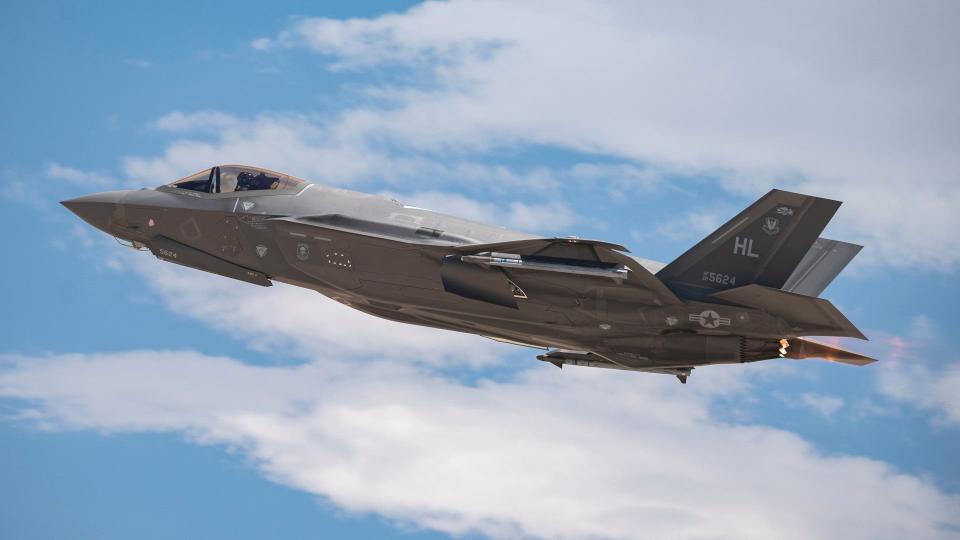
Air Force Gen. Mark Kelly, head of the service's Air Combat Command, announced the first-ever melding of a Red Flag exercise and a COMPTUEX in a Tweet earlier today. Previously, the service had only said that Navy assets, including EA-18G Growler electronic warfare aircraft and other "carrier-based aircraft and surface vessels," had taken part in what was formally known as Red Flag 23-3. The Air Force says its F-35A Joint Strike Fighter and F-22 Raptor stealth fighters, B-1 bombers, KC-135 and KC-46 tankers, and HH-60G Pavehawk rescue helicopters also took part in the exercise, which ran from July 17 until August 4.
https://twitter.com/ACC_Commander/status/1688898247669014528
"The last week of Red Flag 23-3 occurred in conjunction with the U.S. Navy," said U.S. Air Force Col. Eric Winterbottom, head of the 414th Combat Training Squadron at Nellis Air Force Base in Nevada, which leads all Red Flag exercises, said in a statement in a press release today. "Integrating the Air Force and Navy into a large-scale exercise places emphasis on joint planning, communication, and execution to enhance interoperability and joint operational effectiveness."
https://www.youtube.com/watch?v=FVm3rpxahMo
At the time of writing, the Air Force does not appear to have identified the specific carrier strike group that took part in the hybrid Red Flag. However, the USS Carl Vinson is the only carrier known to have been in the region. In June, the Navy said the Carl Vinson Carrier Strike Group was due to hold its next COMPTUEX "later this year." A COMPTUEX is the last major training event for American aircraft carriers before their next scheduled deployment and brings together the rest of the accompanying strike group so it can practice key skill sets as a complete fighting unit.
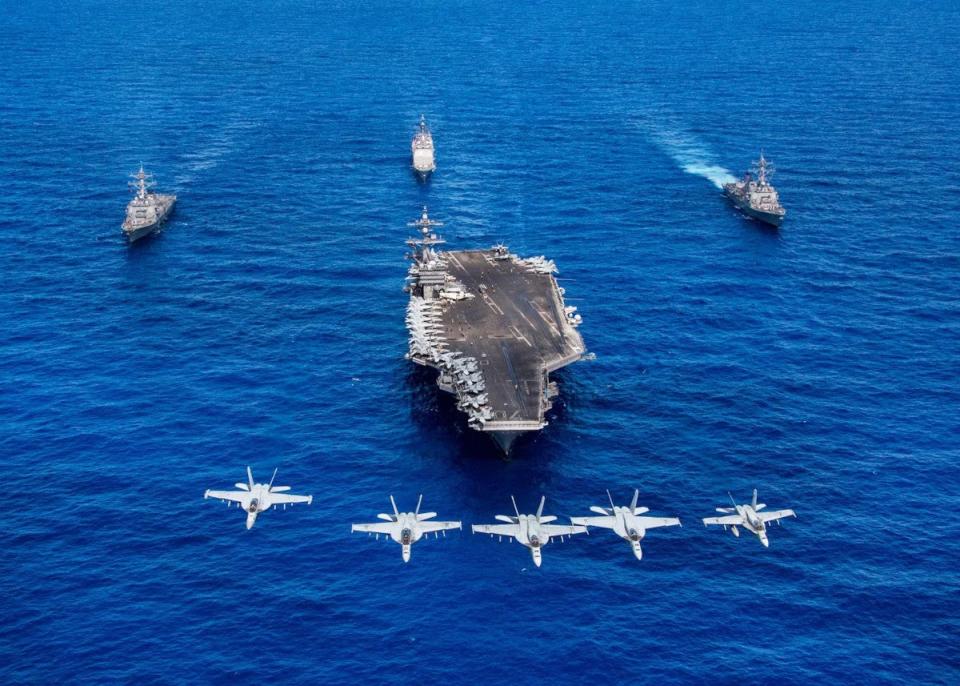
The exact composition of the carrier strike group that took part in Red Flag 23-3 is not entirely clear, either. They typically include the carrier's air wing, a Ticonderoga class cruiser, a number of Arleigh Burke class destroyers, and often at least one attack submarine. Navy carrier air wings at present include a mixture of F/A-18E/F Super Hornet fighters, EA-18G Growler electronic warfare jets, E-2D Hawkeye airborne early warning and control aircraft, MH-60 Seahawk helicopters, and Carrier Onboard Delivery (COD) assets. The service is also in the process of integrating F-35Cs into its carrier air wing, and Carl Vinson has already previously deployed with those fighters embarked, and is also transitioning from the C-2 Greyhound COD aircraft to the CMV-22 Osprey tilt-rotor.
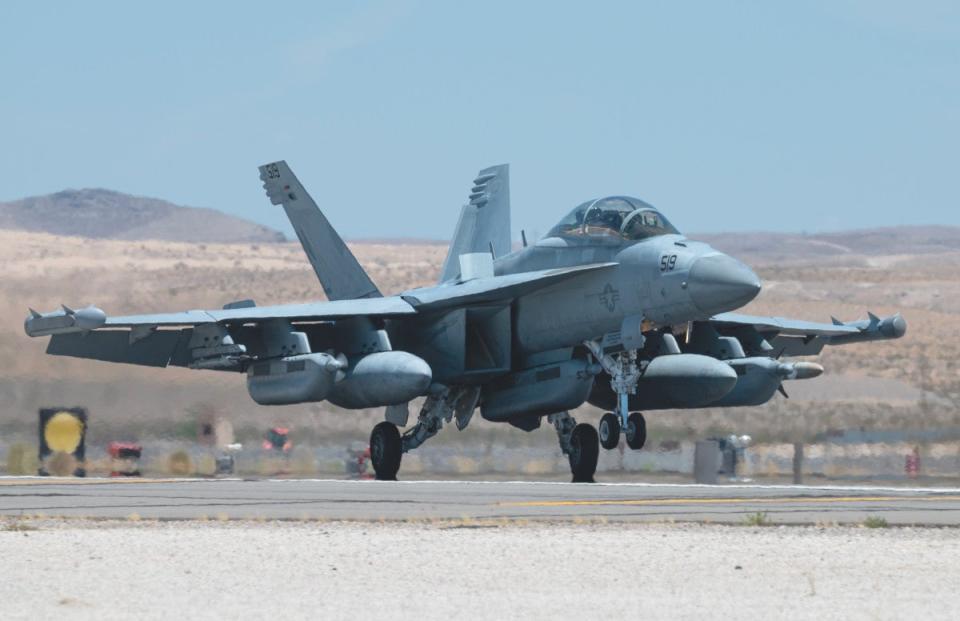
It is worth noting that Navy aircraft, along with assets from other branches of the U.S. military, as well as allied and partner forces, regularly take part in Red Flag exercises. Red Flag 23-3 is differently significant for a number of reasons.
Historically, the Red Flags have been primarily held within the confines of the sprawling Nevada Test and Training Range (NTTR) complex adjacent to Nellis. Red Flag 23-3 took place in part in ranges off the coast of southern California, which are often used for COMPTUEXs. Aircraft taking part in the exercise, including F-22s, also operated directly from Naval Air Station North Island in San Diego.
https://twitter.com/wavy_zyro/status/1684986069186674688?s=20 https://twitter.com/DanielFireTruck/status/1686909498340851712
Plane spotters using online flight tracking software also tracked many participants that are staples of Red Flag as they ventured west out to the SOCAL range complex. These included RC-135 Rivet Joints, E-3 AWACS, lots of tankers, and combat search and rescue aircraft. The many tactical aircraft that were also present are not commonly shown on flight tracking apps. Some of the aircraft that were traceable ventured far out over the ocean, likely simulating a realistic combat scenario like what would occur in a fight in the Pacific against China.
https://twitter.com/thenewarea51/status/1687378769919496192?s=20
When the Red Flag exercise series began some 50 years ago, "the idea was to give them [Air Force pilots] up to 10 reps of realistic live training in air-to-air combat, large force engagement, so they had those [skills] under their belt when they went to deployment," the narrator of a video accompanying Gen. Kelly's Tweet, who is not identified, explains. "When we first started to pivot about eight-ish years ago to the INDOPACOM [U.S. Indo-Pacific Command] theater, as our interest turned to our peer competitor [China], our exercises soon followed suit."
The War Zone has highlighted this trend in the past already. Though this is the first time a COMPTUEX has been combined with a Red Flag, it is not the first time one of those Navy carrier exercises has been coupled with a major Air Force training event, either.
Last summer, pilots and aircraft assigned to the Air Force Weapon School at Nellis linked up with a carrier strike group as part of a so-called integration exercise, or WSINT. This is another type of large-scale exercise and they serve as capstone events for various courses at the Weapon School, as you can read more about here.
"What we've seen is an exponential leap in how we drive scenarios in Red Flag, and most other exercises, to Pacific-driven [ones] and all the challenges that provides, [like] the unique challenges of the large distances you find when you fight in areas like the Pacific," the narrator of the video in Gen. Kelly's Tweet continues "We've expanded our training with the Navy to include maritime training... [at] similar distance[s] that we might see in a Pacific fight, [and] that actually goes over water and poses those new challenges that flying sorties over exposed ocean does provide as opposed to doing it overland."
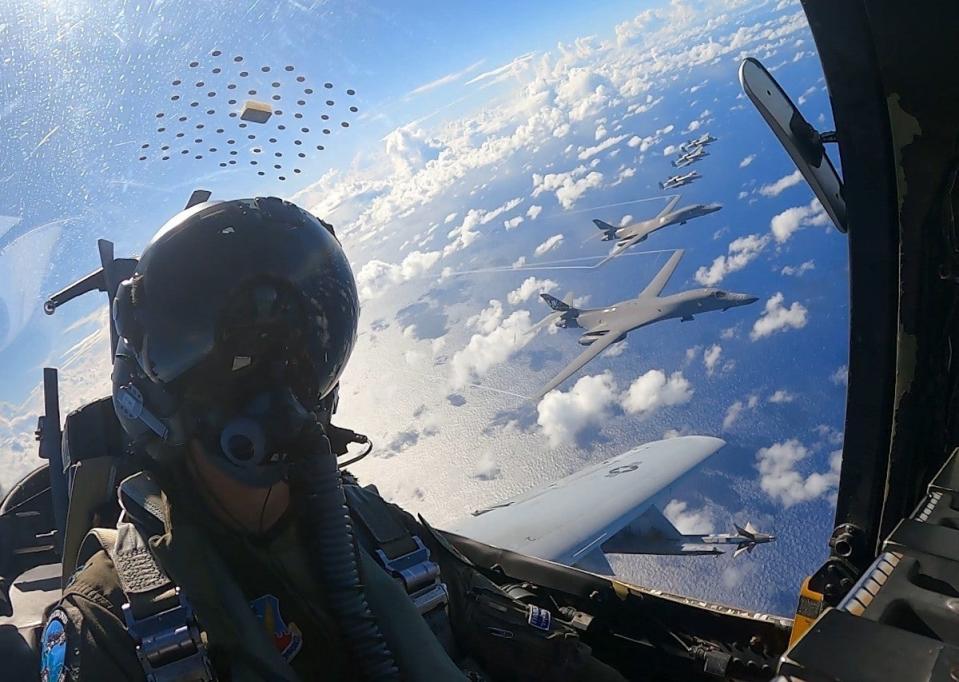
On top of all this, the U.S. military, as a whole, is increasingly concerned about the vulnerability of existing large bases, especially to stand-off strikes. As a result, the Air Force has been focusing heavily on distributed concepts of operation that require various types of aircraft to be ready to rapidly deploy to less typical locales, including ones that might be remote or austere. In the Pacific region, available operating locations can often be very far away from each other, to begin with, further underscoring the need for experience flying overwater for extended periods.
This is all to say nothing of the demands of conducting actual combat sorties from these disparate sites or being prepared to respond to various other kinds of contingencies. The Air Force is being presented with particular challenges with regard to conducting combat search and rescue operations in the context of a high-end fight in the Pacific where traditional CSAR platforms like the HH-60G (and its replacement, the HH-60W Jolly Green II), are seen as too vulnerable and too short-legged. The service has already said that it is likely it will have to rely on other services, like the Navy, for the recovery of downed pilots in the future.
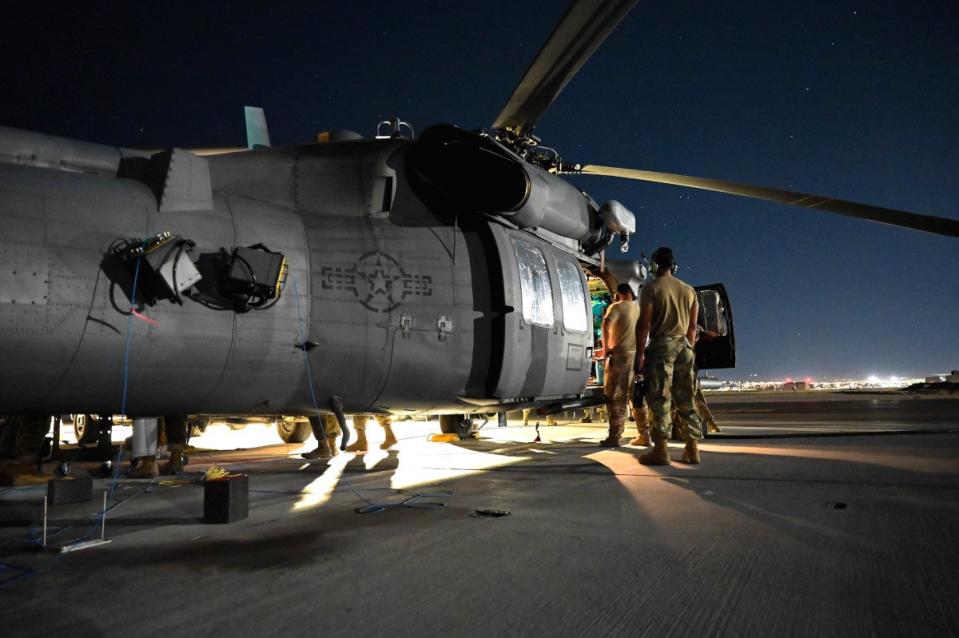
Beyond specific types of environments, there is a growing demand to replicate potential future operations across very large areas, which has also been pushing the Air Force to expand the physical scope of Red Flag and other similar exercises. Being able to include range complexes off the southern California coast offers one option for doing this.
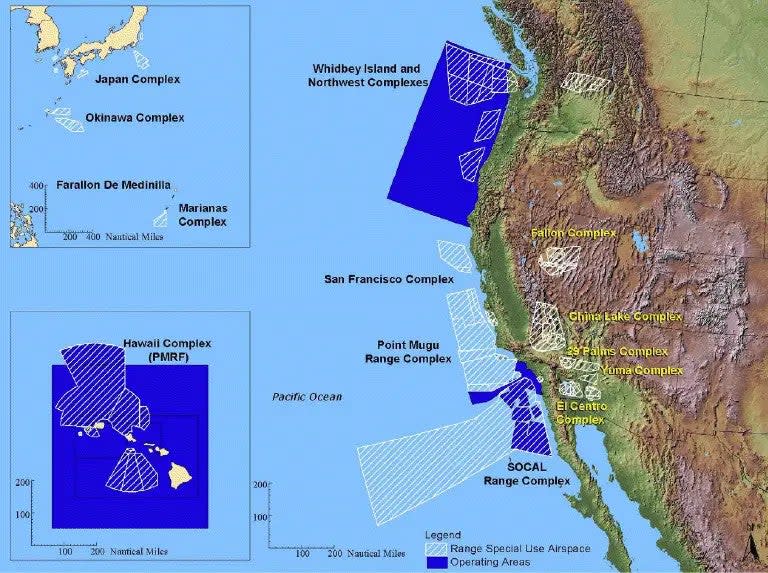
The Air Force has also been increasingly using other airfields around the Nevada Test and Training Range to expand the scope and complexity of Red Flag exercises.
Overall, Red Flag 23-3 provided "provide more complex target areas" and an opportunity to practice "camouflage and concealment techniques in multiple spectrums," according to the Air Force. It included "realistic scenarios forcing reattacks in accordance with acceptable levels of risk as it concentrates on the Indo-Pacific Command," as well.
The Air Force has also been investing significantly in new technologies and tactics, techniques, and procedures to help camouflage and conceal its activities and otherwise deceive opponents to help further reduce vulnerabilities. Much of this work is classified due to operational security concerns, but The War Zone recently dove deep into what is known about what the service is doing in this regard.
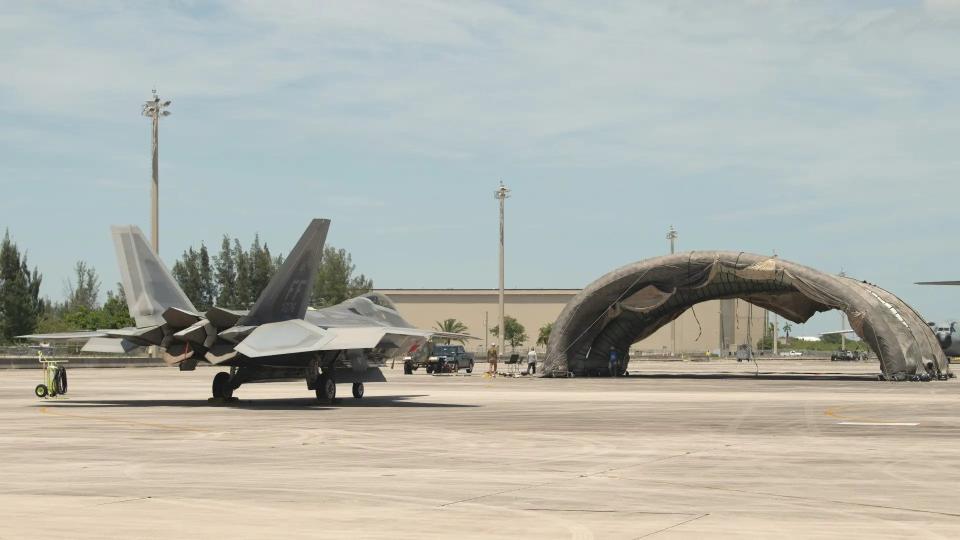
The Air Force also said that this most recent iteration of Red Flag gave an opportunity for "aggressors [to] refine threat replication, apply advanced threats and jamming capabilities, and increase threat capabilities to maximize training in non-permissive environments."
Last year, the Air Force created its first dedicated aggressor squadron with F-35s, the 65th Aggressor Squadron at Nellis, with a specific mandate to replicate higher-end threats posed by Chinese forces. In May, the service announced it had stood up a new F-16 Viper-equipped aggressor unit, the 706th Aggressor Squadron, also at Nellis, to help more generally with growing demand for advanced mock opponents in large-scale exercises like Red Flag.
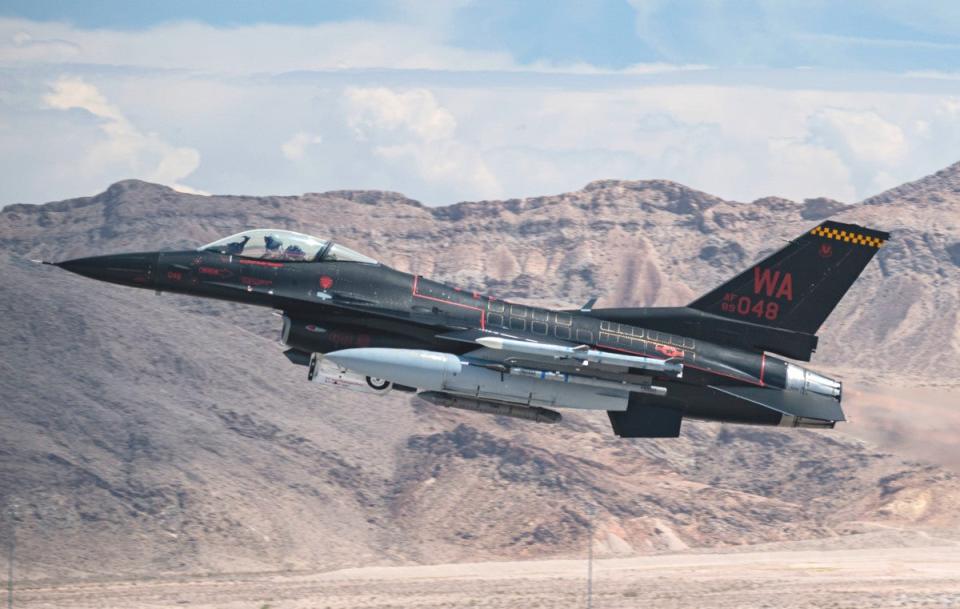
From what we know so far about Red Flag 23-3's structure, it was fully in line with a focus on preparing for a major future conflict with China in the Pacific, possibly prompted by a crisis over the status of the island of Taiwan. U.S. military officials have been increasingly sounding the alarm over China's People's Liberation Army (PLA) reaching a point where it would be confident in succeeding in an armed intervention against Taiwan before the end of the decade. Whether or not such conflict would occur along that timeline is unknown, but authorities in Beijing have made clear they are willing to use force against the island, if necessary, including if the government there declares formal independence.
In addition, the PLA has been steadily modernizing over the past few decades, in general, expanding both its operational capabilities and its capacity to project force further and further beyond the country's borders. Stealth aircraft, like the J-20 fighter, advanced drones, hypersonic weapons, and high-end electronic warfare systems have been major focus areas for China's armed forces. The PLA Navy (PLAN) has seen particular growth, too, including with the commissioning of two aircraft carriers with a third more advanced type getting ever closer to entering service.
https://www.youtube.com/watch?v=XE9yIG8zjQk\u0026t=2s
“The Department of Defense prioritizes the People’s Republic of China as our number one pacing challenge,” Col. Winterbottom, the 414th Combat Training Squadron, said about Red Flag 23-3 in today's press release. “By training together in a realistic and challenging environment, the USAF and Navy enhanced their joint capabilities, bolstering the nation's ability to maintain a free and open Indo-Pacific.”
"My priority for future Red Flag exercises is to ensure realism and relevance,” he continued. “Red Flag will continue to expand into long-range, dispersed, joint and coalition, peer-contested training scenarios. We also train to respond to and effectively deter nation-state threats emanating from Russia, Iran and North Korea, and transnational and non-state actor threats from violent extremist organizations, such as those operating in the Middle East, Africa, and South and Central Asia.”
Altogether, Air Force large-scale exercises, overall, appear to only be increasing in size and scope, including in the physical spaces they're conducted in and the kinds of higher-end missions and threats they replicate, especially Chinese ones. While Red Flag 23-3 was the first to be interwoven with a Navy carrier's COMPTUEX, this, specifically, only looks set to become more commonplace in the future.
Contact the author: joe@thedrive.com

